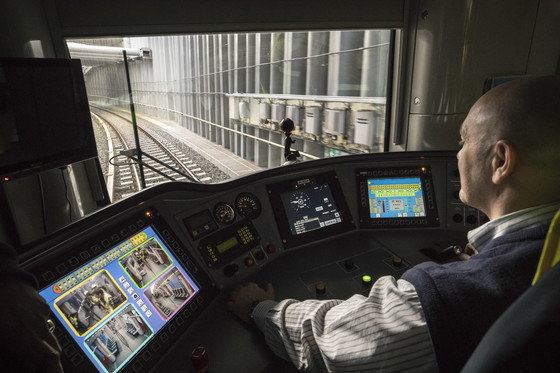railway-international.com
29
'21
Written on Modified on
What if trains were talking to each other?
Over 56% of the world population is currently living in large cities. By 2050, 2.5 billion more people will have moved into urban areas.

As a result of growing urbanization, the need for mass transit systems with expanded capacity is steadily increasing, more people need to arrive on time while travelling on less crowded trains and at higher speeds, without compromising on reliability or safety.
For cities preparing to meet this future demand in networks where possibilities to expand are limited and costly, innovative digital signalling solutions presents a remarkable opportunity to develop thriving, healthy and liveable cities with low pollution and integrated transport systems.
In the past, once a metro line had the maximum amount of trains running on it, there was no way to safely add more trains without risking collisions. The options for increasing capacity were limited to creating extra track or a second train line, resulting in costly new infrastructure investments.
The introduction of the advanced digital signalling is allowing more trains to run on one track
While our dream of the self-driving car is still under development, the self-driving metro has successfully been running, across the international stage, for decades. The reality is that if you are travelling on public transportation in a major metropolis, it is likely that the metro you are on is operating under some level of automation, either with or without a human driver or attendant, made possible by digital signalling ensuring safe distance between vehicles while allowing each metro to execute driving commands received from the control centre. However, whilst providing operators the flexibility to safely and dynamically regulate traffic based on rider demand, this type of train operation has had its limitations, as many decisions have to be made based on cooperation between several railway management systems, such as the onboard, trackside and control centre systems.
Today, trains can talk in real-time
So, instead of knowing where a train is only when it passes certain signals, new high capacity traffic management cuts out most of the need to transfer information through trackside equipment, allowing trains to communicate directly with each other
This real-time communication optimises train operations and reduces passengers waiting time, allowing metros to run closer together without compromising safety.
If a metro line is currently running trains every 90 seconds, the addition of smarter, decision-making trains, can reduce this interval to 60 seconds. This allows an operator to run 60 metros an hour instead of only 40.
- 190 metro lines worldwide equipped with CBTC from Alstom
- 30% higher capacity
- 60 seconds reduced headways
- 20% less trackside equipment needed
Smarter means faster
Now that trains have more intelligence integrated onboard and can ‘talk’ to each other directly, they have contextual awareness and can make strategic decisions.
If you have lived and regularly taken public transportation in a large city, you have probably found yourself at least once stuck on a stalled metro inside a tunnel, with no possibility to change to a different line in order to continue your journey. With the newest digital systems already existing today, a stalled train can now directly alert the trains running behind it, allowing them to re-route to another track, or safely reverse into the prior station to allow passengers the freedom to disembark.
When trains can ‘talk’ in real-time, they can synchronise their departures and arrivals, perfectly compensating for the delayed departure of the train ahead of them with calculated braking or increasing their speed to reduce headway after departing a station several seconds late due to overcrowding.
With disruptive technologies and intelligent trains, a new chapter in urban digital mobility is emerging
The introduction of smarter trains that can communicate with each other has rendered rail travel more efficient and flexible than ever before. A leap to increasing capacity while reducing the need for investments in costly trackside infrastructure.
www.alstom.com

